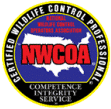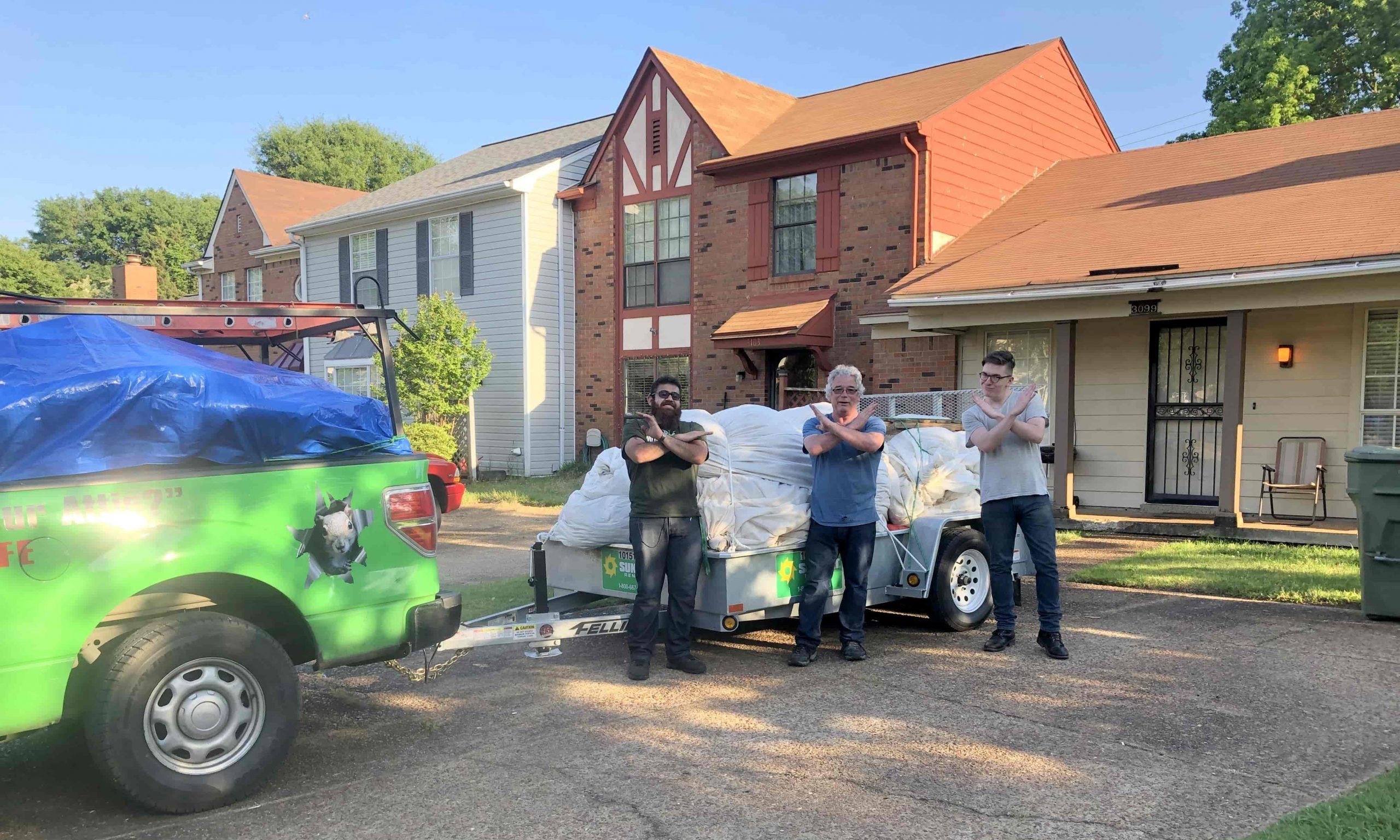
Call for Your Exclusive Wildlife Inspection Report.®
Opossum Removal
Opossums are one of the most unique animals in North America; they are the only marsupials in the region, meaning that their young develop in an external pouch, just like kangaroos. Although they are not the most destructive creatures, they are quite capable of causing a mess, especially if they access your property.
These nuisance pests are primarily docile and nocturnal. They are also opportunistic feeders and asides from eating fruit, grains, and insects, they will also eat compost piles, garbage cans, and pet food. For many homeowners around the Memphis area, here are some of the most common problems caused by opossums:
- Opossum residing in the attic
- Opossum living under the porch, shed, or deck
- Turning over garbage cans, pet food, and eating from it
- Defecating in the yard or swimming pool
- Risk of diseases, including tuberculosis, leptospirosis, tularemia, coccidiosis, toxoplasmosis, and Chagas disease
- The terrible odor from a decomposing opossum carcass.
At Wildlife X Team Memphis, we can help you deal with your opossum infestation.
Opossum Removal Process
Here’s how professionals at Wildlife X Team Memphis go about opossum removal:
Inspection
The first stage of opossum removal is understanding their activity in your yard. Opossums are primarily attracted to a property by two major things: food and shelter. During this stage, the goal is to find out what’s attracting them to your property. Does there seem to be high activity around your trash cans at night? Or do you hear screeching and hissing sound coming from the attic?
Furthermore, looking for signs of infestations such as scattered trash, droppings, and more, can help indicate their presence. If the opossum is residing in your property, this stage will help you identify where it’s nesting.
Opossums are tractable creatures and this makes them easy to remove. In the face of threat, they are likely to play ‘possum’ or dead. When handling an opossum, it’s important to wear hand gloves to avoid the transmission of diseases.
Adult opossums in the attic can easily be caught with a snare pole. However, the attic should be properly checked for baby possums since nursing mothers are the regular occupants of attics.
Trapping can also be used to capture and relocate opossums. However, remember that trapping is subject to state laws so make sure to check with your local wildlife authority. Trapping is an art that requires an adept understanding of opossum behavior. At Wildlife X Team Memphis, we apply our expertise to help you come up with an effective trapping strategy.
How to Effectively Trap Opossums
Opossums are generally not very destructive, but they can be a big nuisance. That’s especially true if the whole family makes their home somewhere in or around your home. At Wildlife X Team Memphis, we have seen it all when it comes to opossums.
The most common thing we see when it comes to opossums is the mess they create. If an opossum makes its home on your property, you’re likely to find trash scattered around as well as droppings and other food scraps. This can get even worse if the opossum somehow finds its way inside your home.
The best way to deal with an opossum invading your space is to trap the animal and remove it to a distant location. However, this isn’t as simple as just placing a trap on the ground and waiting for the animal. There are some techniques and tactics involved that will give you the best odds of success.
Where to Place an Opossum Trap
The first step to trapping an opossum is to determine where the animal is spending its time on your property. At Wildlife X Team Memphis, we recommend doing this during daylight hours because this is when the animal will be less active.
The best place to set up your trap will be just outside the opossum den. This gives you the best odds of catching the animal as it comes and goes. If you can’t find the den or you know that it’s outside of your property, the next best move is to place the trap in the area where you see the most evidence of the animal.
The Best Opossum Trap
Once you locate the opossum den, you can start thinking about how to trap the animal. At Wildlife X Team Memphis, our top recommendation for opossum traps is a large steel cage trap with a single door. When we say large, we’re talking about a trap that’s around 3 feet long and 1 foot high.
These traps are live traps, meaning the animal will not be harmed. They work using bait – when you set the trap, you place the bait inside it on top of the trigger plate. Once the animal enters the trap and steps on the trigger plate, the trap will close and the animal won’t be able to escape. We recommend these types of traps for most common household pests including raccoons, skunks, and foxes.
Best Opossum Bait
Once you’ve located the opossum den and you have your trap on hand, the next step is to bait and set the trap! Don’t get too excited just yet because this is where the real work comes in.
Choosing the right bait for an opossum is key to successfully trapping the animal. Now, it’s true that opossums are omnivores so they will eat almost anything – but that’s also part of the problem. Opossums eat the same foods as most other common pests. In our experience at Wildlife X Team Memphis, the best opossum baits are apples, marshmallows, and sweet breads.
You will need to put some of the bait inside your trap on top of the trigger plate. We also recommend placing bait around the trap in a way that will lead the animal into the trap. This could mean making a trail of food from the den towards the trap, but it varies based on the situation.
How to Set Up an Opossum Trap
Once you have your bait, then it’s time to actually set the trap. Using the recommendations we already went over, place your steel cage trap around the opossum den or near the area where you see the most evidence of its presence.
Here’s another quick tip – when you place the trap, put a brick or rock on top of it so it won’t move once the animal is caged.
Place the bait on the trigger plate and make sure the door is set so it will close when triggered. Use some of your bait to create a trail towards the trap. Then it’s time to wait.
Opossums are nocturnal creatures, so we recommend setting the trap at dusk and checking it in the morning. You should not leave the trap open during the day because you might accidentally catch other animals.
Get Quote for Your Exclusive Wildlife Inspection Report.®



Decontamination & Repairs
After the opossum has been removed from either the attic or crawlspace, all their remnants like droppings, nesting materials, hairs, and other organic matters must be removed. The infected space must then be decontaminated with a special enzyme-based cleaner. Finally, all damaged materials, including insulation, chewed electric wires and more should be repaired.
Wildlife X Team Memphis can help you develop an effective opossum removal strategy that will leave you opossum-free far into the future. If you live in the Memphis area, contact us today!




